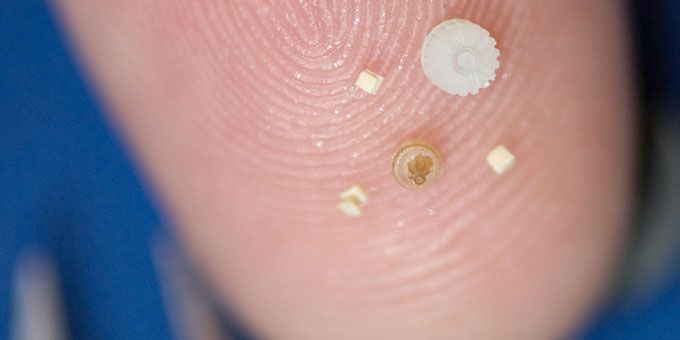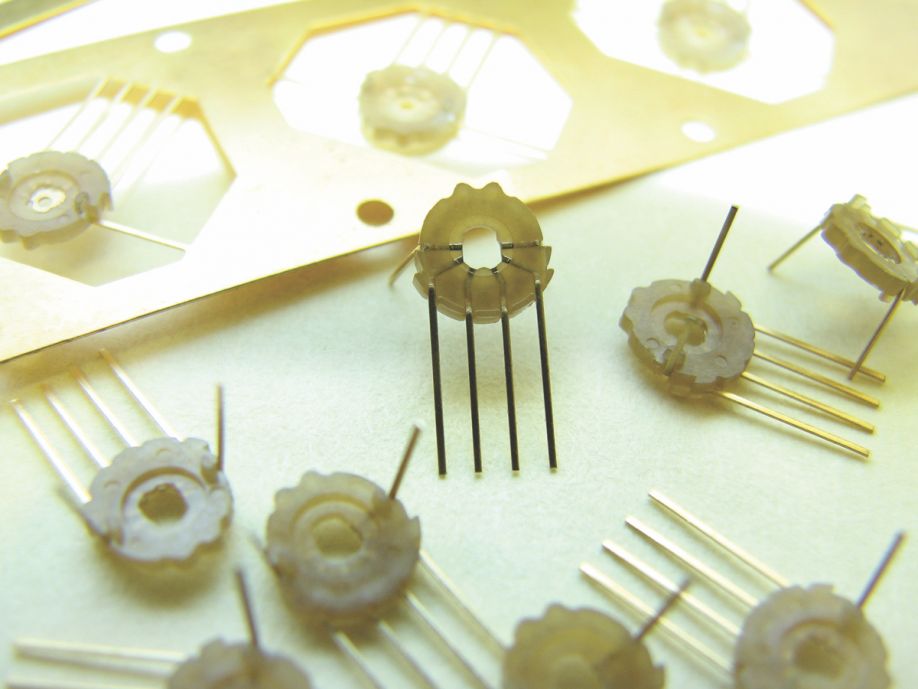In the world of micro molding, where precision and efficiency are paramount, the concept of boomerang projects can present significant challenges for both customers and micro molders.
 The Challenges of Boomerang Projects in Micro Molding: a Customer Perspective
The Challenges of Boomerang Projects in Micro Molding: a Customer Perspective

Paul Runyan, VP Sales | Accumold
INTRODUCTION
In the world of micro molding, where precision and efficiency are paramount, the concept of boomerang projects can present significant challenges for both customers and micro molders.
Traditionally, boomerang projects in this context refer to situations where a customer's project returns to the micro molding company for rework or modifications. These projects "boomerang" back to the manufacturer due to various reasons, such as design changes, quality issues, or unforeseen challenges during the manufacturing process. Instead of progressing smoothly from concept to completion, these projects require additional attention and adjustments before they can be finalized.
However, in our experience at Accumold, it is projects undertaken by alternative micro molders that end up boomeranging back to us, as customers seek an expert organization that can dig their project out of a hole, a hole that their originally selected micro molder does not have the wherewithal to extricate themselves from.

This can be extremely costly for the micro molding customer, but I am happy to give you a road map which will detail your route to market avoiding elephant traps along the way.
LIKE A BOOMERANG, ITS GONNA COME BACK
First of all, let’s look in more detail at why a project may “boomerang.”
Well, most obviously as already mentioned, there may need to be design changes. Customers may realize the need for design modifications after the initial manufacturing process has begun. These changes could be out of their or the micro molder’s ability to foresee (for example as a result of new requirements or regulations), but more often than not they are because the customer requires improved functionality, or design flaws are discovered during the production stages. Or simply it may be that designs are just impossible to mold successfully.
As a result, the project boomerangs for adjustments to the mold, tooling, or other manufacturing aspects.
In some cases, boomerang projects are caused by quality issues that are identified during quality control checks or customer inspections. If the product does not meet the specified quality standards, it may be necessary to rework it or to address the underlying manufacturing issues.
Boomerang projects can also arise due to material-related challenges or unexpected complications during the production process. Issues such as material shrinkage, warping, or difficulty in achieving the desired tolerances may require the project to be returned for adjustments or alternative manufacturing techniques.
Poor communication or incomplete information between the customer and the micro molder can also lead to boomeranging. If the project requirements, specifications, or changes are not effectively communicated or documented, it can result in misunderstandings or misalignment between the customer's expectations and the manufacturing process.
How can all these pitfalls be avoided, you may ask? Well, “the answer my friend is blowin’ in the wind”.
You need to nurture a partnership with your chosen micro molder as close to design conception as possible, have a laser focus on design for micro molding (DfMM), and stimulate an air of collaboration in product development.
Efficient communication, proactive expectation management, and a collaborative approach are vital to mitigate the occurrence of boomerang projects. By fostering a strong working relationship, customers and micro molders can work together to minimize the need for project returns and ensure smoother and more successful manufacturing processes.
Oh, and of course, it does help to select a best-in-class micro molder from the get go. I will give you an insight into how to do this later.
BOOMERANGS CAN BE COSTLY
Here is a scenario that I am all too familiar with. For the sake of this article we will call it a boomerang RFQ (request for quote).
A customer comes to Accumold requesting a quote on a tight tolerance micro molding project, or a micro-sized or micro featured component. Post-quote, the customer goes somewhere else for prototype or production tooling and/or parts. The alternative micro molder fails to fulfil the project satisfactorily — perhaps unable to make the part, hold the required tolerance, or unable to scale in production. The customer comes back to us asking if our original quote is still good.
Immediate customer implications are compellingly dire.
A knee jerk attraction to go with the lowest quote means paying for non-recurring engineering (NRE) costs twice. The low cost quote may be because the alternative micro molder does not have the assets in place to undertake a true micro molding project (micro molding is not just molding but smaller), and it may not be vertically integrated, a vital pre-requisite for micro molding success. Success is predicated on looking beyond the quoted cost and instead focussing on the values, experience, capabilities and assets the micro molder can bring to a customer project.
Delays are another obvious consequence. Not just because the starting pistol sounded some time ago, and now the customer is back at the starting line, but also because the RFQ process typically has to start again.
And the apocalyptic consequence? The project is scrapped or dumbed down and the new innovative technology the customer was seeking never sees the light of day.
AVOIDING PITFALLS
When you need to produce precision micro plastic parts, you will necessarily begin to approach specialist molding companies, and most likely the ones that brand themselves as micro molders.
So the success of a micro molding related product development program, and the way to avoid boomeranging is primarily a lesson in supplier selection. Customers need to realise that their chosen micro molding partner is not just a job shop that produces miniature plastic parts.
Also, not all micro molders are the same, despite outward appearances. Best-in-class micro molders are companies with in-depth design experience, material expertise, tooling expertise, validation expertise, and of course production and assembly expertise. This combination of capabilities coupled with decades of expertise and knowledge is 99% of the battle when it comes to cost-effective, timely, and efficient micro product development.
DfMM & SUPPLIER SELECTION – THE KEY TO RIGHT FIRST TIME
Perhaps the most fundamental key to success and way to avoid boomeranging is a firm grasp of Design for Micro Manufacturing (DfMM).
In a very real way, a micro plastic part manufacturer is so much more than a company that sells small plastic parts, and instead should be seen as a company that sells Design for Micro Molding (DfMM). The plastic parts are the end result, but the engine for success is ensuring that the design of the part is optimized, tooling is optimized, it can be made efficiently, it can be measured effectively, and if necessary it can be automatically assembled.
As such, your chosen supplier must be vertically integrated, with all stages of the product development process being considered in early customer / supplier collaborative design meetings, and teams of experienced experts being able to influence the ultimate success of a project.
Fundamental to the success of the production of micro plastic parts is tolerance attainment. As such, product development is all about risk mitigation, ensuring that tolerance “drift” is managed and kept within the parameters that ensure integrity of end-use parts and components.
So saying, the focus is on control, and to fully control the development of a product from initial design to final automated assembly all expertise and technology used must be under one roof. A fundamental question from the get-go is to ask whether your chosen supply partner can offer in-house design expertise and material assistance, micro tooling fabrication (vital), micro molding (and micro additive manufacturing) technologies, validation, and automated assembly.
Another important aspect of successful product development is scalability. In terms of production, is the infrastructure big enough to support volume requirements over an extended period of time? You see, some customers require millions and millions of parts with a continuity of supply running over years. Put quite simply, without the space to accommodate this scale of supply and the associated manufacturing cells, then your chosen partner may be found wanting.
Another key to success is the relationship you have with your chosen supplier which ideally should be a true product development partnership, and this demands a healthy client supplier relationship. You want to remain in touch, involved, and influencing outcomes, not just handing over control to your chosen micro plastic part expert who holds all the secret sauce. Yes, you are working with your chosen partner as they have the expertise, capabilities, scalability, and sustainability to see your project through. But you must insist upon — and see evidence of — collaboration and transparency in client supplier dealings.
Your chosen micro molder should have a solutions-oriented focus, and a demonstrable reputation in the various industry sectors for high quality, timely, and cost-effective results.
SLINGSHOTS BEAT BOOMERANGS
The achievement of — for want of a better phrase — a slingshot project rather than a boomerang project boils down almost entirely to supplier selection, and fundamentally the key to success in supplier selection is to see evidence. Claims are easily made, but when you seek evidence of experience, longevity, vertical integration, capability, scalability, and sustainability, it is a little harder to perfume the rose. Don’t be shy about asking questions, and where possible, visit your shortlisted suppliers. You are about to embark on a project that may cost hundreds of thousands of dollars, so scrutiny is essential and should be welcomed by your product development partner.
You owe it to yourself to avoid paying for your product development twice!
Paul Runyan is VP Sales at Accumold. The company has grown to a 130,000 square foot fortified facility designed for assurance of supply, employs over 350 staff, and is a net exporter shipping all over the world every day from its Ankeny, IA, USA facility which runs 24 hours a day, 7 days a week.
The content & opinions in this article are the author’s and do not necessarily represent the views of ManufacturingTomorrow
Featured Product

